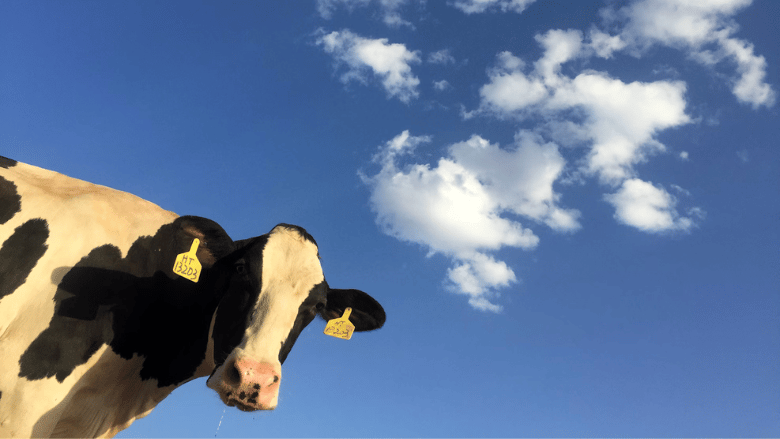
'Digesting Truth' at the Kickoff to IAFP
SCROLL
DOWN
If you were at the International Association for Food Protection (IAFP) Annual Meeting in Long Beach, California from July 14–17, hopefully you were able to attend the Ivan Parkin Lecture on Sunday evening. The Ivan Parkin Lecture, established by IAFP in 1986 to honor individuals who have made a significant impact on the field of food safety, was given this year by Dr. Lawrence D. Goodridge, Leung Family Professor in Food Safety at the University of Guelph in Ontario, Canada. At Guelph, Dr. Goodridge applies genomics to the study of foodborne pathogens and antimicrobial resistance within a One Health context.
In his Ivan Parkin address, Dr. Goodridge spoke about how food safety professionals can help fight the spread of misinformation (false information shared without harmful intent), disinformation (false information shared to deliberately deceive), and malinformation (information that stems from the truth but is exaggerated to mislead or cause harm) related to food safety. Mis-, dis-, and malinformation undermine the basis for evidence-based decision-making and exploit gaps in public knowledge. This erosion and exploitation can lead to distorted perceptions of risk and pseudoscientific beliefs, which can then be further propagated through other media, social media, and word of mouth.
As an example of misinformation, Dr. Goodridge shared a video clip of renown 1960s American chef, author, and TV personality Julia Child, prepping a chicken for cooking in a home kitchen environment. Admittedly, Salmonella cross-contamination from poultry was not publicly well understood at the time the clip was televised. However, the video—which is still available to watch online—shows Ms. Child handling the raw chicken and other items (such as a dish towel) in what we now know to be an unhygienic manner—including rinsing the chicken in the kitchen sink and not washing her hands after touching the raw poultry. A quick internet search shows that Julia Child's recipes and cooking methods are still popular and widely referenced today. Consumers who are unaware of the dangers of bacterial cross-contamination from raw poultry and other raw foods might consult such a video clip for a recipe and imitate Ms. Child's poultry handling behavior—which could lead to disastrous consequences in the form of foodborne illness.
“Mis-, dis-, and malinformation undermine the basis for evidence-based decision-making and exploit gaps in public knowledge.”


Dr. Goodridge presented additional examples of mis-, dis-, and malinformation in the media, some involving food safety and others tying into public health or politics. Examples included misleading headlines and inadequately researched articles from the mass media, as well as misinformation and malinformation pushed by social media influencers possessing little to no technical or scientific expertise. (Note: IAFNS' Dr. Caitlin Karolenko penned a thoughtful article on this very topic for us in April—you can read it here: "Hashtags and Hazards: The Dubious Influence of Social Media Trends on Food Safety").
Dr. Goodridge also underlined the wider effort needed to combat misinformation and disinformation in food safety. Experts from academia, industry, food science, government, technology, and communication must work together to develop more effective methods to educate consumers on food safety. Effective, purposeful, and transparent food safety education has practical application in the home and gives the public a better understanding of science-based, risk-informed industry practices. It can also help people critically evaluate the food safety "advice" and "tips" being peddled by non-expert influencers on social media.
As an editorial professional in food safety, I walked away from Dr. Goodridge's lecture with a heightened awareness of the importance of communicating scientific truth through technical media, and to do so in innovative ways. To the food safety professionals and other experts who make up Food Safety Magazine's dedicated audience—thank you for placing your trust in our journalism. We look forward to continuing to deliver accurate, relevant, trustworthy, technical content to you daily, to help you do your job better and aid in the united effort to combat food safety misinformation.
Regards,
Adrienne Blume, M.A.
Editorial Director

References
- Food Safety Magazine Editorial Team. "FDA Publishes FSMA Pre-Harvest Agricultural Water Final Rule." Food Safety Magazine. May 2, 2024. https://www.food-safety.com/articles/9449-fda-publishes-fsma-preharvest-agricultural-water-final-rule.
- U.S. Food and Drug Administration (FDA). FSMA Final Rule on Pre-Harvest Agricultural Water. Current as of May 8, 2024. https://www.fda.gov/food/food-safety-modernization-act-fsma/fsma-final-rule-pre-harvest-agricultural-water.
- International Fresh Produce Association (IFPA). "FDA Issues Final Ag Water Rule, IFPA Reacts." May 6, 2024. https://www.freshproduce.com/who-we-are/press-center/2024/fda-issues-final-ag-water-rule-ifpa-reacts/.
- Food Safety Magazine. "Ep. 125. Dr. Conrad Choiniere: Moving 'Closer to Zero' Through Collaboration." Food Safety Matters Podcast. August 23, 2022. https://www.food-safety.com/articles/7959-ep-125-dr-conrad-choiniere-moving-closer-to-zero-through-collaboration.
- FDA. "Agricultural Water Assessment Builder." https://agwaterassessment.fda.gov/.
- FDA. "Annual Agricultural Water Assessments and Risk-Based Outcomes." https://www.fda.gov/media/178219/download?attachment.

